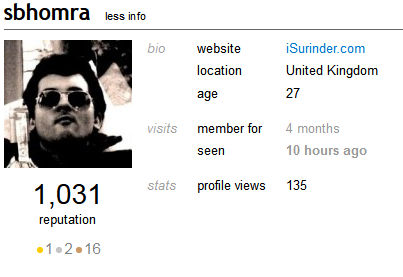.NET Library To Retrieve Twitpic Images
I’ve been working on a .NET library to retrieve all images from a users Twitpic account. I thought it would be quite a useful .NET library to have since there have been some users requesting one (including me) on some websites and forums.
I will note that this is NOT a completely functioning Twitpic library that makes use of all API requests that have been listed on Twitpic’s developer site. Currently, the library only contains core integration on returning information of a specified user (users/show), enough to create a nice picture gallery.
My Twitpic .NET library will return the following information:
- ID
- Twitter ID
- Location
- Website
- Biography
- Avatar URL
- Image Timestamp
- Photo Count
- Images
Code Example:
private void PopulateGallery()
{
var hasMoreRecords = false;
//Twitpic.Get(<username>, <page-number>)
TwitpicUser tu = Twitpic.Get("sbhomra", 1);
if (tu != null)
{
if (tu.PhotoCount > 20)
hasMoreRecords = true;
if (tu.Images != null && tu.Images.Count > 0)
{
//Bind Images to Repeater
TwitPicImages.DataSource = tu.Images;
TwitPicImages.DataBind();
}
else
{
TwitPicImages.Visible = false;
}
}
else
{
TwitPicImages.Visible = false;
}
}
From using the code above as a basis, I managed to create a simple Photo Gallery of my own: /Photos.aspx
If you experience any errors or issues, please leave a comment.
Download: iSurinder.TwitPic.zip (5.15 kb)





